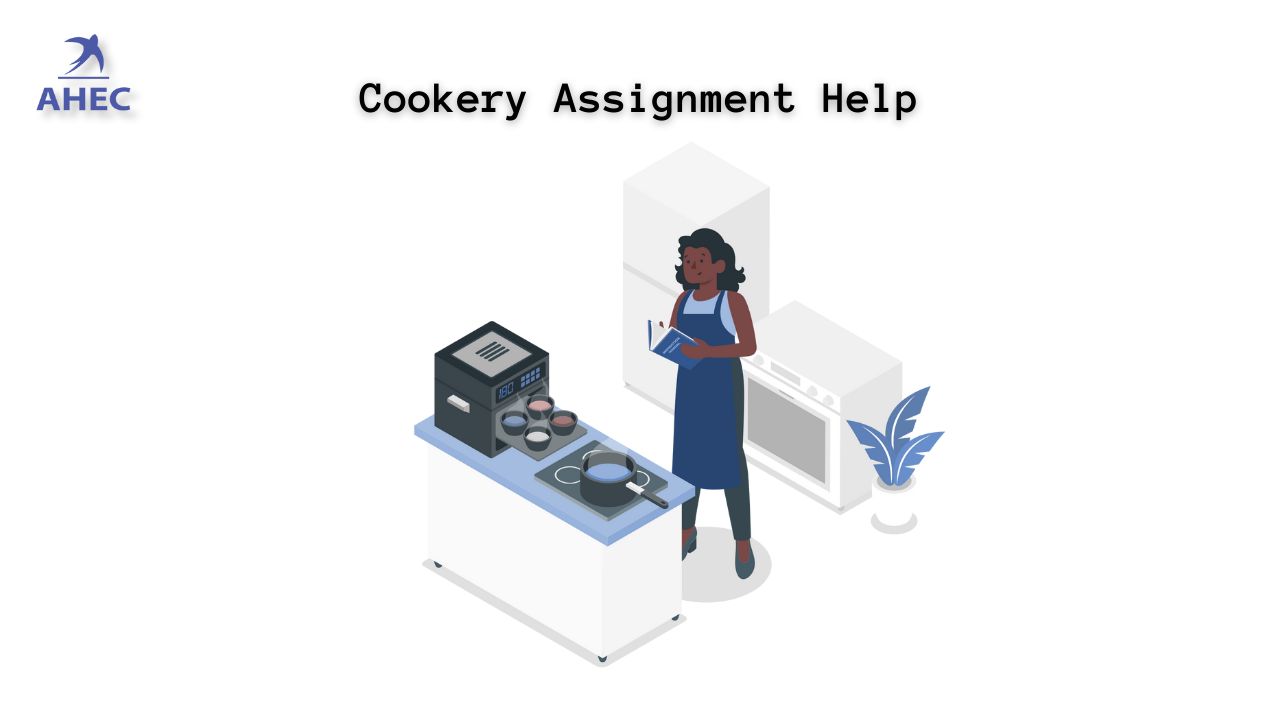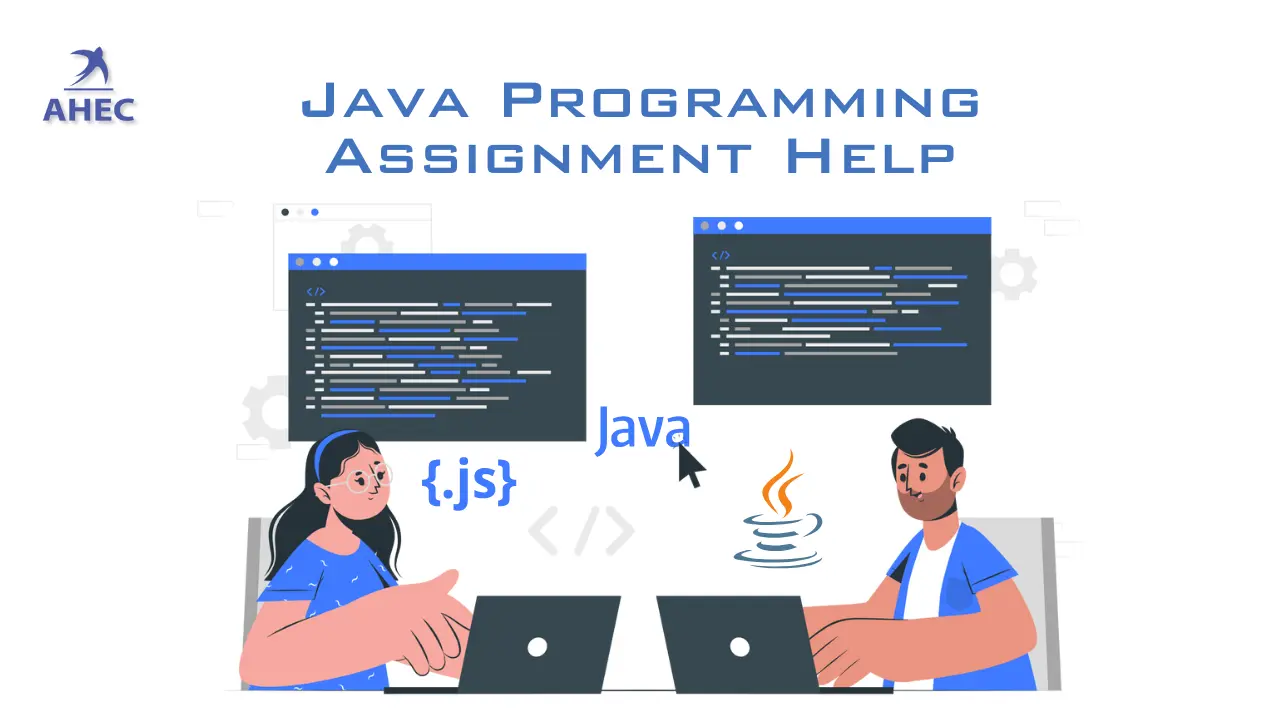In Australia, medical training Australia is a part of the educational process associated with the ongoing and initial training for Medical Practitioners (medical doctors).In Australia, a medical student first attends medical school, after which they complete pre-vocational training such as an internship and residency. They then enrol in a programme for specialist-vocational training as a registrar, which eventually leads to fellowship qualification and recognition as a fully qualified Specialist Medical Practitioner (such as that of a suitably qualified General Practitioner or Specialist Consultant).Medical training in Australia is provided through Medical Schools and the Medical Specialty Colleges, as well as monitored by The Australian Medical Council (AMC) and the Australian Health Practitioner Regulation Agency (AHPRA) of which is AHPRA, which includes the Medical Board of Australia, where doctors are licensed nationally.
In the end, the Australian health system has been historically similar to the one in that of the United Kingdom, but in the past few years, it has seen influences from both the United States and Canada. In contrast to their North American counterparts, Internship and Residency in Australia are pre-vocational terms intended for general clinical rotations so that the junior doctor can gain a broader clinical experience in various medical specialities prior to embarking on a specialist-vocational training program as a Registrar. It is true that in the United States, there are no pre-vocational phrases, and the selection of a speciality during the Internship allows for an efficient and rapid clinical rotation for the desired speciality as well as the enrolment process and progress to the Residency program to achieve a specialty board certification. As such, Residency in the United States is equivalent to a Registrarship in Australia. Board-certified Attending Physicians in the United States are equivalent to specialists-fellowship certified General Practitioners and specialist consultants in Australia.
A majority of the speciality fellowships or medical college degrees granted to clinicians trained in Australia are recognized internationally. In addition, Australia accepts the most recognized specialist and university qualifications of international medical graduates from countries with established medical education and health systems. That is, subject to the confirmation of identity (including requirements for visas and immigration) and qualifications, as well as practice experiences and history, English language competency, the period of probationary supervision of practice, and any other tests and assessments to fill in any knowledge gaps to ensure that clinicians are aligned to the current standards for medical practices in Australia in accordance with the appropriate Medical Specialty College, Australian Medical Council and Medical Board of Australia.
The requirements for education and training for a physician beginning medical school and the completion of specialist training generally can take between 9 to sixteen years (or more) in the case of full-time studies as well as work, and is dependent on the chosen speciality and meeting the requirements of in-training. In Australia, the most typical for doctors to pursue either the Specialist Consultant or General Practitioner professional and training paths and training pathways, with a smaller subset who choose not to obtain an accreditation called fellowship and pursue their careers as non-specialist Hospitalist Clinicians. General Practice is recognized as a medical speciality, with it own specialization college as well as a training program. It is similar to the practice scope for Family Physicians in the United States or Canada.
|
General Practitioner |
Consultant |
Hospitalist |
|
University Medical School Between 4 and 7 years old |
University Medical School Between 4 and 7 years old |
University Medical School Between 4 and 7 years old |
|
Medical Degree Awarded Medical Board Provisional Registration |
Medical Degree Awarded Medical Board Provisional Registration |
Medical Degree Awarded Medical Board Provisional Registration |
|
Internship 1 year |
Internship 1 year |
Internship 1 year |
|
Medical Board General Registration |
Medical Board General Registration |
Medical Board General Registration |
|
Residency 1 to 2years and older |
Residency 1 to 2years and older |
Residency 1 to 2plus years |
|
Registrarship 3 to 4years and older |
Registrarship From 4 to 7+ years |
Registrarship Typically, it is done. Variable and Experiential-based |
|
College Fellowship Awarded Medical Board Specialist Registration Ongoing CPD as per Speciality College |
College Fellowship Awarded Medical Board Specialist Registration Ongoing CPD as per Speciality College |
No Fellowship Requirement Medical Board General Registration Ongoing CPD as per Logbook and/or College |
Medical School
Admission into medical school and success allows the student to be recognized as a medical professional (doctor) and begin their postgraduate training in pre-vocational studies. Medical schools aim to provide primary medical knowledge and practical skills that will prepare aspiring junior doctors for safe and proficient practice at the beginning of their residency. It is one of the most competitive universities to be considered for.
Nomenclature
In the past, Australian medical schools have been following the pattern of the United Kingdom by conferring the degrees of Bachelor of Medicine and Bachelor of Surgery (MBBS) to its medical graduates and giving the degree of Doctor of Medicine (MD) to those who have completed advanced research studies or granted honorarily to individuals who have made a significant contribution in the field of medical professionals (analogous to PhD or honourary doctorates). A large portion of Australian medical schools, since the beginning of 1990, has moved from undergraduate programs to graduate-level ones (that is, they have students who have already earned a bachelor's degree in another area of study). However, medical schools still offer the MBBS as their standard medical degree, regardless of whether they were an undergraduate or graduate-level program. Some medical schools have shifted to offering MD (or the combination of the BSc and MD) BSc or MD) rather than the MBBS to their medical students. However, as the MBBS is classified in the Australian Qualifications Framework (AQF) as an Associate's Level 7 degree, it has the advantage of not requiring students to take part in a research-based project, While the MD is classified as a Level 9 Master's degree. However, it does require its students to produce an academic research project during their studies. However, students in the MBBS program typically continued to pursue research outside of the curriculum.
Whatever the reason, either MBBS or MD earned from all Australian medical schools entitles an individual to be registered by the Medical Board as a medical practitioner. This permits the student to be addressed with the prefix 'Doctor' (Dr .)'. It is important to keep in mind that while the colloquial term "physician" within the United States is used to broaden the definition of any type of medical professional but in Australia and in the United Kingdom 'physician' typically is a reference to a doctor who is specialized in the area of internal medicine or general medicine or its sub-specialties and similarly, the term surgeon is typically the medical professional who is specialized in a surgical field. To prevent confusion due to the broad interpretation and the wide range of practitioners who employ the prefix "Doctor (Dr.) for other fields as well, it is the Medical Board, and relevant federal and state legislation has decided to officially refer to medical doctors as medical professionals in Australia.
Undergraduate Entry
Medical schools have historically in Australia adhered to those of the Commonwealth in the Commonwealth and United Kingdom by admitting students straight out of secondary (high school) and matriculating. Around half of the universities in Australia are still undergraduates at the time of their admission process. Candidates submit their applications directly to the medical school or through the state-wide facilitated college course selection program. The majority of applicants are assessed using the following criteria:
- Australian Tertiary Admissions Ranking (ATAR) score, which is calculated using the secondary school exit exam of the state's performance.
- University Clinical Aptitude Test (UCAT) score that evaluates the ability of the applicant for medical school using psychological, logic, and reasoning tests,
- Curriculum Vitae (CV) along with references that should include any work experience as well as extracurricular accomplishments, like sporting or musical,
- Interviews were conducted by each medical school at the university. These are usually multi-station and are designed to further psychosocially evaluate the potential candidate's suitability for medicine and also to evaluate their strengths.
Medical programs for undergraduates are usually between 5 and 6 years long in accordance with the standard two-semester academic calendar (the exception can be Bond University which has a three-semester academic calendar that allows students to complete the program within 4.6 months). Although there are a few universities that will accept a student as an undergraduate, they generally require them to complete the first degree in sciences (or another subject) in addition to a medical degree which is required to be earned simultaneously.
Graduate Entry
Nearly half of the universities in Australia have been following the pattern of the United States and moved to post-graduate programs. Candidates are diverse from those from "pre-med" or health sciences-related backgrounds, as well as those who do not belong to related professions, such as engineering or law. The way applicants are evaluated is usually through an array of factors, including:
- University Grade Point Average (GPA) score from their last degree(s) is a measure of their academic achievements.
- Graduate Australian Medical School Admissions Test (GAMSAT) score that measures the ability to solve problems, scientific understanding and psychometric ability
- Curriculum Vitae (CV) along with references that must highlight the experience of the applicant and the professional positions that have been held, as well as any relevant qualifications or accomplishments
- Interviews are conducted by each medical school of the university, which typically is multi-station and designed to help psychosocially evaluate the potential candidate's ability to be a part of the medical field.
Graduate medical schools are generally four years in duration. They are not based on the normal academic year of a university due to the sheer amount of information and the experience needed to be acquired.
Syllabus
The majority of medical schools have the same educational program with two phases:
- Pre-clinical (first 3 to 5 years) is usually classroom-based and academic in establishing the understanding of the anatomy, pathophysiology, and pharmacology as well as gradually introducing fundamentals of patient care and fundamental clinical skills.
- Clinical (last three to four years) is usually in the clinic or hospital where students participate in clinical experiences in various areas, such as the clerkship or observership, where they are taught by the clinicians to help them further enhance their clinical abilities.
Most learning is multi-modal and includes traditional didactic learning through lectures, workshops, seminars, clinical simulation and tutorials, and group-based tutorials such as Cased-Base-Learning (CBL) or Problem-Based-Learning (PBL), in addition to any hospital-facilitated educational activities.
Researchers' project(s) are required for students in Master's level MD programs but are not required for Bachelor's level MBBS programs. In addition, they are teaching students to critically evaluate the literature and apply for Evidence-Based Medicine.
Assessments typically consist of a mix composed of written (MCQ, EMCQ, long and short answer) and practical exams (OSCE) during the end of each term or unit. It is vital to know that, unlike in the United States, where there is an exam that is standardized (USMLE) throughout the nation in order to obtain a license to practice medical practice, Australian medical schools' exit tests are determined by the specific medical school. They are used as the qualifying test to qualify to apply for Medical Board registration. Successful graduation from medical school permits graduates to be registered in a temporary manner with the Medical Board and proceed to apply for an internship. It's not until the specialization training phase that tests are held in a uniform manner across the country, which is assisted by medical speciality colleges.
Present Australian medical schools and their fundamental medical degrees are listed below.
|
University |
Current Degree(s) |
Duration |
The AQF level |
Entry |
Previous Degree(s) |
|
University of Adelaide |
BMedSt/MD |
6 years old |
9 |
Undergraduate |
MBBS |
|
Australian National University |
MChD |
4 years old |
9 |
Graduate |
MBBS |
|
Bond University |
BMedSt/MD |
4.7 years |
9 |
Undergraduate |
MBBS |
|
Deakin University |
MD |
4 years old |
9 |
Graduate |
BMBS |
|
Flinders University |
MD |
4 years old |
9 |
Graduate |
BMBS |
|
Griffith University |
MD |
4 years old |
9 |
Graduate |
MBBS |
|
James Cook University |
MBBS |
6 years old |
7 |
Undergraduate |
-- |
|
University of Melbourne |
MD |
4 years old |
9 |
Graduate |
BMedSc/MBBS |
|
Monash University |
BMedSc/MD |
5 years old |
9 |
Undergraduate |
MBBS, MBBS(Hons) |
|
Monash University |
BMedSc/MD |
4 years old |
9 |
Graduate |
MBBS, MBBS(Hons) |
|
University of Newcastle |
BMedSc/MD |
5 years old |
9 |
Undergraduate |
BMed |
|
University of New England |
BMedSc/MD |
5 years old |
9 |
Undergraduate |
BMed |
|
University of New South Wales |
BMed/MD |
6 years old |
9 |
Undergraduate |
MBBS |
|
University of Notre Dame Australia |
MD |
4 years old |
9 |
Graduate |
MBBS |
|
University of Queensland |
MD |
4 years old |
9 |
Graduate |
MBBS |
|
University of Sydney |
MD |
4 years old |
9 |
Graduate |
MBBS |
|
University of Sydney |
BSc/MD or BA/MD |
7 years old |
9 |
Undergraduate/Graduate (Combined) |
BA(Adv)(Hons)/MBBS, BSc(Adv)/MBBS, BMedSci/MBBS, BComm/MBBS, BEcon/MBBS, BMusSt/MBB |
|
University of Tasmania |
MBBS |
5 years old |
7 |
Undergraduate |
-- |
|
University of Western Australia |
MD |
4 years old |
9 |
Graduate |
MBBS |
|
Western Sydney University |
BClinSci/MD |
5 years old |
9 |
Undergraduate |
MBBS |
|
Charles Sturt University |
BClinSci/MD |
5 years old |
9 |
Undergraduate |
|
|
University of Wollongong |
MD |
4 years old |
9 |
Graduate |
MBBS |
|
Curtin University |
MBBS |
5 years old |
7 |
Undergraduate |
-- |
|
Macquarie University |
MD |
4 years old |
9 |
Graduate |
-- |
Internship
An internship is a time that is supervised and mandatory all-clinical experience. It allows medical students to develop and apply there their clinical skills and knowledge while taking on greater responsibility for the delivery of secure, high-quality medical care to patients. Skills for diagnosing, communication and management abilities, which include procedural and therapeutic skills and professionalism, are built under the supervision of a qualified. Internships also influence career choices for many students by giving them experiences in various medical specialities, including general practice, and preparing them for further professional (specialist) education.
The Medical Board of Australia has set up an Intern Registration Standard. It defines the supervised internship (provisional enrollment year) qualifications which must be fulfilled to allow the graduates from Australian as well as New Zealand medical programs accredited by the Australian Medical Council and endorsed by the Medical Board of Australia to be eligible for general registration.
The graduates of these programs of study must be registered with a provisional license and be able to successfully finish 12 months of supervised internship before becoming qualified to be registered as a general practitioner. In general registration, it indicates that the physician is competent, knowledgeable and has the experience required to be an entry-level medical professional who can practice within the limitations of their education.
Interns must perform well under supervision under the following conditions:
- Minimum 8 weeks, which gives you an opportunity to practice emergency medical services
- for at least ten weeks which gives you an opportunity for experience in the field of medicine for at least ten weeks.
- Minimum ten weeks, which offers experience in the field of surgery.
- A range of additional accepted terms that make up twelve months (minimum of 47 weeks of a full-time equivalent).
It is typical to have between four and five terms during an internship (between 10-12 weeks duration). Interns must finish three core terms in surgery, medicine and emergency medical care. Other (non-core) rotations comprise the remainder of the intern year, allowing them to study different areas of medicine, surgery, as well as psychiatry, anaesthesia, paediatrics, and other less urgent medical care, like rehabilitation medicine, palliative care, geriatrics, and general practice.
Internships are jobs that are facilitated and funded by state governments and The Commonwealth (federal) Federal Government. In 2016 there were 3314 state-funded internship posts and 100 Commonwealth-sponsored internship positions. With the increase in doctors graduating, there are questions about the number of internship positions available.
The application process for internships is typically managed by the State Govt Health Department through an annual recruitment campaign. The applicants have the chance to choose the district and/or hospital(s) they want to work for and are selected through a mixture of a merit-based and ballot-based system. This is because the Australian Medical Student Association provides an annual guide to internships to aid medical students through the application process and also provides general information on the various State as well as Territory Health systems and clinical opportunities offered by the numerous hospitals.
Residency
The term "residency" for doctors in Australia, generally, is an additional one or two years after the completion of internships that are spent in a hospital (or occasionally in community health facilities) to gain additional experiences in clinical practice in a variety of settings that have a higher level of responsibility. Contrary to medical education that is based on that of the United States system, internship and residency in Australia are considered to be pre-vocational terms that doctors do not yet officially begin their education in a particular field. While certain medical schools that specialize in medicine admit applicants after completing a successful year of an internship or postgraduate years 1 (PGY-1), The majority of medical schools require applicants to complete at least another two to three months (or greater) of vocational training at the degree of a residency (PGY-2 up to PGY-3, or higher) to ensure that they have obtained sufficient experience in clinical settings prior to applying for a specialist program. The terms and conditions for clinical rotations are determined by each resident (and contingent on the availability of health services). There aren't obligatory terms to meet in the case of, for instance, that if a resident ambitions to pursue enrollment in the surgical speciality or a specific surgical speciality, they may prefer to seek out additional rotations in diverse areas of surgery (for instance Neurosurgery, Cardiothoracic, or Urology) in contrast to those who are interested in emergency medicine, they are likely to benefit from additional rotations in diverse specialities in critical care (that means, Intensive Care Medicine, Emergency Medicine or Anaesthetics).
During residency, these doctors are identified by a myriad of names, which include but are not only:
- Junior House Officer (JHO), Senior House Officer (SHO), or Principal House Officer (PHO); Resident Medical Officer (RMO) or Senior Resident Medical Officer (SRMO);
- Hospital Medical Officer (HMO) Or,
- Trainee Medical Officer (TMO).
Residents are usually registered in their local Medical Board of Australia, which means they have successfully completed their internship in Australia. Although they are no longer required to submit performance reports directly to the Medical Board no longer requires performance reports to be sent directly to board, does require and delegate the responsibility to the hospital's administration, postgraduate medical councils, and speciality colleges to ensure ongoing support, education, and instruction for their resident (and their registrars) in addition to ensuring regular reviews of performance and reports on their terms from the senior clinicians who supervise their work.
The process for applying for residency is similar to internship applications and is managed by the State government in charge by means of an annual recruitment campaign. The applicants have the chance to select the district or hospital(s) they would like to work at and are chosen based on a merit-based process which usually includes a look at the applicant's resume, interviews and referee report.
Registrarship / Speciality Training Programs
Registrars
Registrars are doctors who have been officially accepted and certified into the appropriate speciality (also called a 'vocational') training program. Hence they are also referred to by the name "trainee specialists". After having completed their internship and one or more years as a resident and having met the prerequisites for the specific college of specialization, doctors are eligible for admission into a recognized medical speciality training program. Vocational speciality training or registrarship is similar to an apprenticeship or a clerkship in other occupations. It's a period of training on the job and assessment to be eligible for admission to one of the recognized medical schools that specialize, which allows doctors to practice medicine on their own and without supervision in the relevant area of expertise, and also have access to an unlimited Medicare provider number as well as Medical Board specialist registration.
The selection process for the specific training program is determined by merit and is extremely competitive. Today, the majority of schools require that applicants with prior supervisors who have been in charge of their clinical program submit references and meet certain criteria in their curriculum vitae, which usually require a score for the applicant in four different areas:
- Experience in clinical practice as a resident or unaccredited Registrar that is relevant to the speciality applied to
- Academic excellence is a part of the fundamental medical degree that includes research publications as well as higher education degrees.
- It is a prerequisite to complete suggested workshops or courses and, if applicable, entrance exams or tests.
- Extracurricular activities and achievements which show that you are a complete person
Candidates with good CVs are encouraged to participate in assessments or interviews that typically test the level of medical knowledge for speciality training. They also investigate psycho-social aspects if the candidate is suitable for the speciality.
Registers pay an annual enrollment fee to join a college that is specialized (in addition to the fees for courses and exams). To qualify for the fellowship exam and the recognition of specialists, many speciality colleges offer clinical, practical and exit exams. These are conducted together with other tests to evaluate the complete variety of competencies and behaviour needed by a doctor, including communication and teamwork. Specialized training programs and exams are overseen by the specific colleges and take between 3 and 7 full-time years to finish, based on the speciality you select. Part-time training is available to most specialities, and dual-speciality training is optional and streamlined for some specialities. Vocational education for the majority of medical specialities takes place in an educational institution that is a public hospital but increasingly involves rotations in private hospitals as well as rural, regional and community health centres. General practice is the exception in which doctors receive the bulk of their education in private general practices within an environment that is primarily community-based.
Registrars are paid and employed by the hospital they work in; consequently, they are still required to apply for a job through recruitment programs that are coordinated by the state minister of health of the State. Some colleges assist in distributing jobs and distribute them to various hospitals and training centres to simplify the traineeship process and obligations for employment, while other colleges leave it to the decision of the trainee.
The most common classifications for registrars are :
- Junior Registrar is typically referred to trainees in the primary or basic phase of their specialization training Assessments are generally an essential requirement for progressing into the advanced training phase.
- Senior Registrar usually refers to trainees at the top of their specialization training and are usually an essential requirement for becoming qualified to complete their course and obtain Fellowship.
- The fellow is typically used to describe students who have completed their speciality training and are qualified for fellowships in speciality but aren't yet employed as specialists.
- The time spent as a Fellow may be required or an option for certain specialities to enhance sub-speciality expertise and/or to ensure further preparation for professionals who are newly certified.
The registrars in the United States are similar in their roles to Residents who are part of The United States medical system; in other words, at the moment in their medical careers, both are in the process of completing specialist training. In the same way, residents of Australia's Australian medical system are doctors who have completed training and have completed additional years in general rotations in order to acquire more experience before enrolling in speciality training programs. For the United States, the choice of speciality is made prior to starting the internship period, so that speciality rotations and clinical training requirements are simplified at an early stage and then flow onto residency. There is no requirement in the United States for junior doctors to complete "pre-vocational/pre-specialist" training or experience general clinical rotations prior to speciality training enrolment; which is in contrast to Australian and other Commonwealth medical systems that choose to keep this traditional format in view that it ensures junior doctors receive holistic training and generalist exposure in various specialities of medicine before choosing a speciality to pursue.
Unaccredited Registrars
"Unaccredited" registrars are doctors who perform the more prestigious obligations and duties as specialist registered registrars within an institution and do not have recognition for the time they spend working in this position or receive the protections for the training of a training job that is accredited. They usually come from a group of senior residents with sufficient experience and aspirations for pursuing this particular speciality as a profession. However, they aren't yet able to satisfy the requirements to officially enrol in the specialist training program and be a certified specialist trainee. The majority of their time working and learning as an unaccredited registered registrar does not count toward the formal training hours for speciality training. Unaccredited registrars fill in the gaps in hospital services when an accredited registrar would be unable to be hired. As a result, they're sometimes called "service" registrars.
Doctors who opt to play the position of a registrar who is not accredited are typical:
- That must meet the requirements in order to get enough exposure and experience in the specific area at a higher level as a registrar and also to obtain favourable referee reviews from supervisors in order to be able to enrol successfully into the specialist program and later become an accredited registered registrar (e.g. a senior resident who been able to apply to become an unaccredited registered registrar to build up knowledge so that can enrol in an accredited surgical specialist training course later).
- Not intending to pursue the field and looking to acquire more experience and education at higher levels as a registrar to enhance their expertise and clinical skills (e.g. individuals who intend to become general or hospitalists who are rotating through intensive care to gain more clinical expertise for critical care).





























































































































































